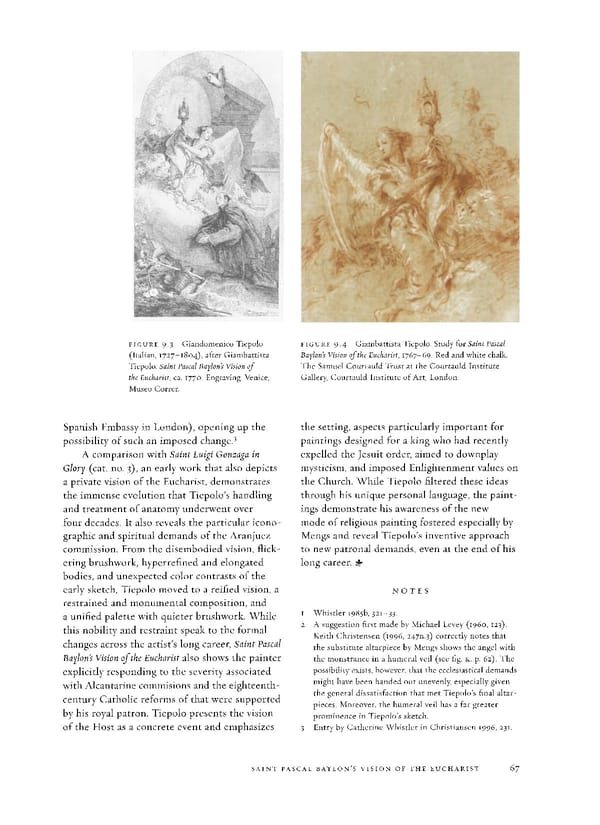FIGURE 9.3 Giandomenico Tiepolo FIGURE 9.4 Giambattista Tiepolo. Study for Saint Pascal (Italian, 1727-1804), after Giambattista Baylon's Vision of the Eucharist, 1767—69. Red and white chalk. Tiepolo. Saint Pascal Baylon's Vision of The Samuel Courtauld Trust at the Courtauld Institute the Eucharist, ca. 1770. Engraving. Venice, Gallery, Courtauld Institute of Art, London. Museo Correr. Spanish Embassy in London), opening up the the setting, aspects particularly important for possibility of such an imposed change.3 paintings designed for a king who had recently A comparison with Saint Luigi Gonzaga in expelled the Jesuit order, aimed to downplay Glory (cat. no. 3), an early work that also depicts mysticism, and imposed Enlightenment values on a private vision of the Eucharist, demonstrates the Church. While Tiepolo filtered these ideas the immense evolution that Tiepolo's handling through his unique personal language, the paint- and treatment of anatomy underwent over ings demonstrate his awareness of the new four decades. It also reveals the particular icono- mode of religious painting fostered especially by graphic and spiritual demands of the Aranjuez Mengs and reveal Tiepolo's inventive approach commission. From the disembodied vision, flick- to new patronal demands, even at the end of his ering brushwork, hyperrefined and elongated long career. & bodies, and unexpected color contrasts of the early sketch, Tiepolo moved to a reified vision, a NOTE s restrained and monumental composition, and a unified palette with quieter brushwork. While 1 Whistler 1985^ 321-33. this nobility and restraint speak to the formal 2 A suggestion first made by Michael Levey (1960, 123). Keith Christensen (1996, 24711.3) correctly notes that changes across the artist's long career, Saint Pascal the substitute altarpiece by Mengs shows the angel with Baylons Vision of the Eucharist also shows the painter the monstrance in a humeral veil (see fig. K, p. 62). The explicitly responding to the severity associated possibility exists, however, that the ecclesiastical demands with Alcantarine commisions and the eighteenth- might have been handed out unevenly especially given century Catholic reforms of that were supported the general dissatisfaction that met Tiepolo's final altar- pieces. Moreover, the humeral veil has a far greater by his royal patron. Tiepolo presents the vision prominence in Tiepolo's sketch. of the Host as a concrete event and emphasizes 3 Entry by Catherine Whistler in Christiansen 1996, 231. SAINT PASCAL BAYLON S VISION OF THE EUCHARIST 67
 Giambattista Tiepolo: Fifteen Oil Sketches Page 67 Page 69
Giambattista Tiepolo: Fifteen Oil Sketches Page 67 Page 69